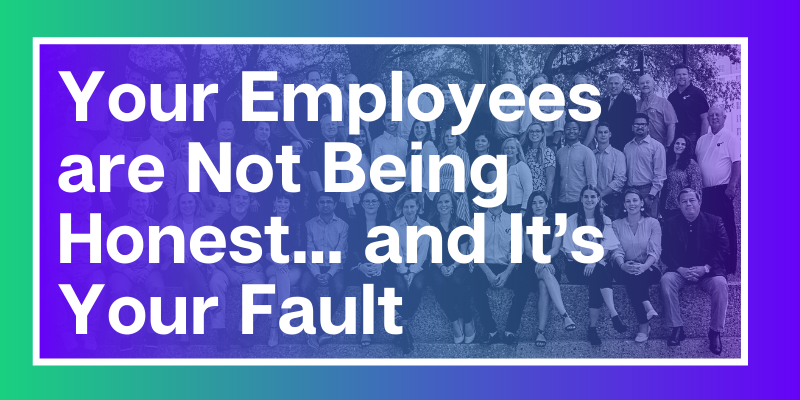
I bet many of your teammates are spreading falsehoods about your company, leading to distrust, half-hearted effort, and apathy. Sounds crazy, right? The craziest part is that you are a contributor to the distortion, but thankfully, you also hold the keys to unlocking the solution.
Have you ever taken inventory of your internal dialogue only to realize that the stories we tell ourselves are almost always worse than the reality of a situation? The narrative in our head is filled with negativity, self-doubt, worse-case scenarios, and conspiracy theories. When we withhold information from our teams, especially the reasoning behind our decisions and actions, we create a void that is most often filled by their own negative inner dialogue. As the story-telling spirals out of control in the minds and hearts of our own team members, we find ourselves in battles that seemingly appear out of thin air with monsters of our own creation.
Enter transparency, the antidote, the panacea, and the great calming agent.
Transparency is the equalizer that allows our teammates to engage in the present moment and to join the conversation as a participant and not as a skeptical observer. As it turns out, fully formed adults are well equipped to handle the truth, even when the reality is bleak, and the situation calls for tough decisions. The intentional act of exposing the thoughts, strategies, and alternative options behind a decision helps to dissipate the extreme views that arise when a person is left to their own imagination.
At 5, we approach transparency with an immense sense of purpose. When you know the struggles and the successes, the areas of focus and the areas of failure, your racing-mind can settle into the truth of the situation and you can stay in the game as a contributor.
Here are some on-going examples of our approach to transparency:
- Outlook Calendars Default to Share All Details - We have been told by several new hires that we must not know how to use Outlook properly once they realize that they can see the full details of every other person’s calendars, including our executives. Very few calendar events are set to private and anyone is welcome to book time on another person’s calendar, regardless of hierarchy or tenure.
- Partner Town Halls – On a regular basis we hold a partner town hall, encouraging questions of any nature for the founding partners of the firm. The partners share their individual viewpoints, allowing the team to even see the varying opinions of our leaders.
- Monthly Company Letters from the President – Since our humble beginnings over 9 years ago, our President, Brian Hayduk, has composed a thoughtful and insightful letter for all team members to read each month. In each letter, Brian provides a deep dive into an area of the business, highlighting the wins and the struggles and challenging the team, and himself, on ways to improve. The letters also include personal reflections, life lessons, and a look into Brian’s own personal growth as a leader and as a parent.
- Company Financials – I can remember times in our early years when our team members were a bit overwhelmed by the open sharing of the company’s financial reports, primarily because we had not thoroughly explained debt financing. This provided an early lesson for our leadership team, if you are going to share complex information, you also need to share the decoder ring on what it all means. Since then we have continued to share our financials openly with all team members but now, we provide the necessary context and visuals to help illustrate each part of the story.
There are countless other examples we could share, so I’d invite you to join the culture conversation by booking a 30-minute appointment with me through this link. I’m ready to share, are you?




